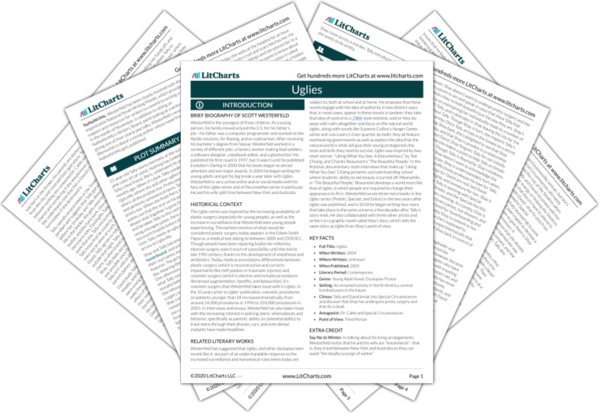Welcome to the LitCharts study guide on Scott Westerfeld's Uglies. Created by the original team behind SparkNotes, LitCharts are the world's best literature guides.
Uglies: Introduction
Uglies: Plot Summary
Uglies: Detailed Summary & Analysis
Uglies: Themes
Uglies: Quotes
Uglies: Characters
Uglies: Terms
Uglies: Symbols
Uglies: Theme Wheel
Brief Biography of Scott Westerfeld

Historical Context of Uglies
Other Books Related to Uglies
- Full Title: Uglies
- When Written: 2004
- Where Written: Unknown
- When Published: 2005
- Literary Period: Contemporary
- Genre: Young Adult Novel; Dystopian Fiction
- Setting: An unnamed society in North America, several hundred years in the future
- Climax: Tally and David break into Special Circumstances and discover that Shay has undergone pretty surgery and that Az is dead.
- Antagonist: Dr. Cable and Special Circumstances
- Point of View: Third Person
Extra Credit for Uglies
Say No to Winter. In talking about his living arrangements, Westerfeld insists that he and his wife are “bisummeral”—that is, they travel between New York and Australia so they can avoid “the deadly scourge of winter.”
NaNoWriMo. Westerfeld has been closely involved with the organization National Novel Writing Month, which provides support and resources for writers to commit to writing a novel in the month of November. In addition to sitting on NaNoWriMo’s Writers’ Board, participating as a writer, and giving one of their yearly pep talks, Westerfeld’s novel Afterworlds is about a young author whose novel from NaNoWriMo gets published.







